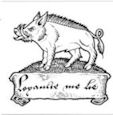Happy New Year!
 The NSW Branch of the Richard III Society wishes all its readers, friends and members a very happy new year.
The NSW Branch of the Richard III Society wishes all its readers, friends and members a very happy new year.
Like with Christmas before, I was wondering what Richard III and his family would have done on New Year’s Eve. Fireworks, champagne and ‘Auld Lang Syne’? Well, not quite. For starters ‘Auld Lang Syne’ was only written by Robert Burns in 1788 (1). At that time fireworks were well established in England as Georg Friedrich Händel’s ‘Music for the Royal Fireworks’, composed in 1749 (2), shows, though they do go back to 12th century China and have been recorded in Europe since 1258 (3).
Richard would have been very surprised that we consider 1 January as the beginning of the year. Until 1752 the new year began in England on the Feast of the Annunciation or Lady Day on 25 March (4).
However, 1 January as the beginning of the new year has a long tradition. Julius Caesar (that’s why it is called the Julian Calendar) changed the Roman New Year’s Day (1 March) to January 1 in honour of Janus, who was the Roman god of all beginnings and gate keeper of heaven and earth and was depicted with two faces: One looking back to the old year (past) and one looking ahead to the new year (future). Part of the Janus celebrations was the exchange of gifts and making resolutions to be friendly and good to one another. This date was kept by the Roman Emperor Constantine when he accepted Christianity and the church initially turned it into a day of prayer and fasting to encourage all good Christians to turn over a new leaf (5). Later, however the date was considered to be pagan and un-Christian (being based on a Roman god) and so the church changed the beginning of the new year to another day (6), which is why it was observed by Richard on 25 March.
For him 1 January would have been the eighth of the twelve days of Christmas lasting from 25 December (Christmas Day) to 6 January (Epiphany), when the visit of the Magi to the Christ child is commemorated. This period corresponds to the tradition that Christmas decorations should not be taken down before 6 January. And our New Year’s Eve (31 December) Richard might have considered as the feast day of St Sylvester, Bishop of Rome at the time of the Emperor Constantine (7). 1 January was the day for giving and receiving gifts. And the season ended on 6 January with the most sumptuous feast of the year (8).
What his new year’s resolutions might have been is anyone’s guess, but one of ours is to make this website even more interesting. One idea is that from January onwards you will find a new series of posts under the heading ‘Ricardian Calendar’ to show what would have happened on a specific date in Ricardian times. And here everyone is invited to contribute!
And now we raise our glasses to you all and shout “Happy New Year!”
Notes:
1. “Auld Lang Syne”, Wikipedia. Retrieved 29 December 2009.
2. “Music for the Royal Fireworks”, Wkipedia. Retrieved 28 December 2009.
3. Jim Mellor, “A history of fireworks”. Cadillac Tight Directory, 2 June 2009. Retrieved 29 December 2009.
4. “New Year’s Day”, Wikipedia. Retrieved 28 December 2009.
5. “History of New Year’s Eve”. Retrieved 29 December 2009.
6. Borgna Brunner, “A History of the New Year”. Infoplease. Retrieved 29 December 2009.
7. Catholic Encyclopedia, “Pope St. Sylvester I (314-335)”. New Advent. Retrieved 29 December 2009.
8. Alison Sim, Pleasures & Pastimes in Tudor England. Sutton Publishing, Stroud, 1999. ISBN 0 7509 3177 9. Pp. 85 – 87
Tags: Christmas, Medieval Life, Richard III

Leave a reply